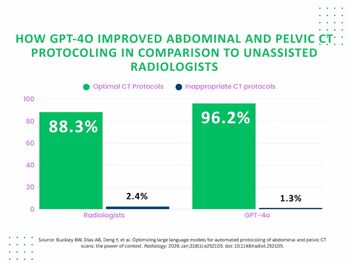
Contrast-Enhanced Ultrasound Outperforms CT and MRI with Some Liver Cancers
CEUS is a safer, less expensive option for diagnosing focal liver disease.
Contrast-enhanced ultrasound (CEUS) is a safer, less costly option than CT and MRI when it comes to the accurate diagnosis of some types of liver cancer, according to recent research.
In a study published recently in
“CEUS provides for the determination of malignancy and allows excellent differential diagnosis of a focal liver mass,” said lead study author Stephanie Wilson, M.D., chair of the University of Calgary radiology department. “CEUS regularly resolves an indeterminate result on CT/MRI and is exceptional as a problem-solving tool in liver imaging.”
Routinely, she said, CEUS demonstrates comparable performance to CT and MRI with the characterization and prediction of malignancy.
To determine the details of CEUS’ capabilities, Wilson’s team analyzed the results of a multi-center trial that included 1,349 patients. The study, they said, revealed no statistically significant difference between CEUS and spiral CT in differentiating between benign and malignant liver tumors, as well as tumor specification. The team also examined a meta-analysis of 21 studies that showed CEUS has 88-percent sensitivity, 81-percent specificity, and a diagnostic odds ratio of 38.62. Those studies also showed no statistical differences between contrast-enhanced MRI and contrast-enhanced CT.
In particular, the team noted, CEUS offers several advantages:
- CEUS is performed in dynamic real-time, providing superior temporal resolution and detection of enhancement.
- The intravascular contrast agent used accurately depicts the presence of microbubbles, comparing comparably to CT and MRI.
- CEUS accurately shows washout in malignant tumors.
- CEUS contrast specific software’s subtraction technique produces a contrast-only image with high sensitivity to enhancement in thin septations and small nodules.
Ultimately, the team concluded, CEUS can play a beneficial and effective role in liver cancer diagnostic imaging.
“CEUS has many similarities to contrast-enhanced CT/MRI, but also unique and valuable differences,” they said, “most showing the additional benefit of inclusion of CEUS with CT and MR for liver imaging.”
Newsletter
Stay at the forefront of radiology with the Diagnostic Imaging newsletter, delivering the latest news, clinical insights, and imaging advancements for today’s radiologists.




























